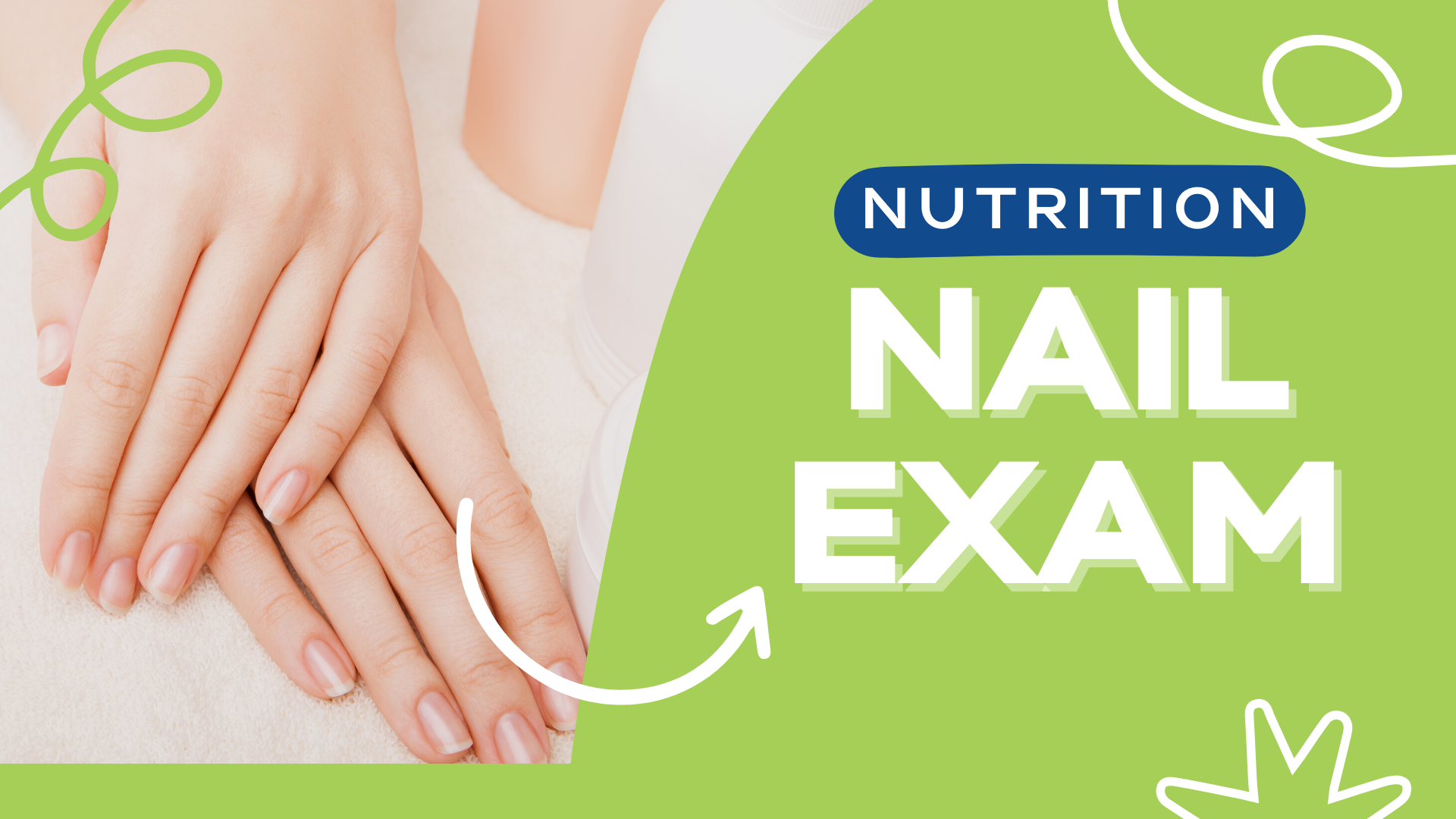Did you know that your nails can be a great indicator of your nutritional status? Examining your nails will allow you to identify some preliminary nutrient deficiencies before you might even see it on lab work.
Let’s discuss the basic nail exam that you can perform to identify any potential nutrient deficiencies. That way, you can discuss this with your doctor, functional medicine practitioner, or dietitian, to make sure that you are assessing properly and getting potential lab work to confirm any findings.
Rather watch or listen than read?
What You Need to Know About Nails
Nails take approximately six months to regenerate specifically the fingernail and approximately a year for the toenail. This is a living tissue that can provide a lot of pertinent information.
We’ll keep it fairly simple and we’ll look at things like the shape, color, lunula, texture/rigidity, strength, and capillary refill of the nail. For example, if there’s a postmenopausal woman who has brittle nails, it would be important to check for bone density because this can be a preliminary finding that we see.
Here is how to perform the nail exam.
6 Ways to Perform Nail Exam
1) Shape
When performing the nail exam, we will start by looking at the shape of the nail. We ideally want this to be a nice round shape. This can be different based on the individual choice of the person as well. Koilonychia, soft nails that spoon out, can be associated with iron deficiency anemia, hemochromatosis, zinc and sulfur deficiency, lupus, and Renaud’s.
You also want to look for any clubbing in the fingers as this can be indicative of some type of systemic issue like cardiovascular disease, irritable bowel disease, mercury alcohol toxicity, etc.
2) Color
Next, you want to look at the color of your nails. You want to see a nice pink hue. When it’s a little bit paler, it can indicate an iron deficiency or anemia. If there are any brown lines that can be indicative of some arsenic toxicity. If there are any bluish hues that can be indicative of some copper toxicity.
3) Lunula
Next, we’ll look at the lunula which is the little white, round part at the base of the nail bed. That should be present on all of the nails, but may be very small or absent on the pinky side and that is okay. The lunula is indicative of protein status, so you do want to see that on all the nails.
4) Strength
We want to check the strength of the nails. You can do this by feeling and testing how firm the nail is. Does it feel like it is easily breakable? Strength is also indicative of protein status.
5) Texture
Is there any vertical ridging? That is common as we age, so you do want to take that into consideration. If it is a little bit more severe that can be related to protein, iron, B12, or folic acid deficiency as well.
6) Capillary Refill
Lastly, we will look at the capillary refill. Press down on the nail bed and release, and it will turn white. In one to two seconds, the blood flow should refill, and it should return to its pink color. If it takes longer than three seconds, then that’s indicative of a circulation issue. That could also play into any type of related issue to alcohol, stress, gluten, protein deficiency, and/or zinc deficiency.
This of course is just scratching the surface of a nutritional physical examination. However, it is a start and it is a way for you to begin to assess your nails. There are lots of signs and symptoms that we see in our nails that we might not be totally aware of.
How Your Vagus Nerve Affects Your Gut Health
Why you should consider eliminating gluten and dairy | Elimination Diet

